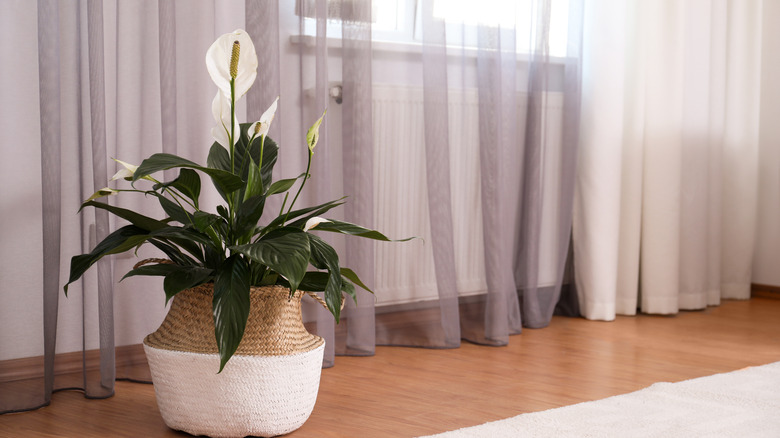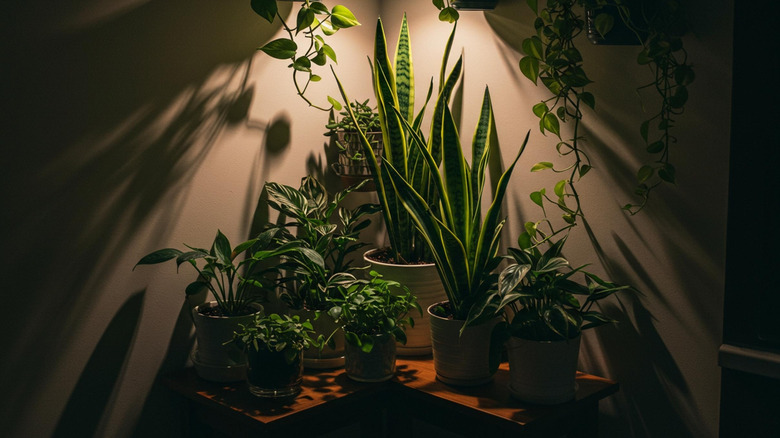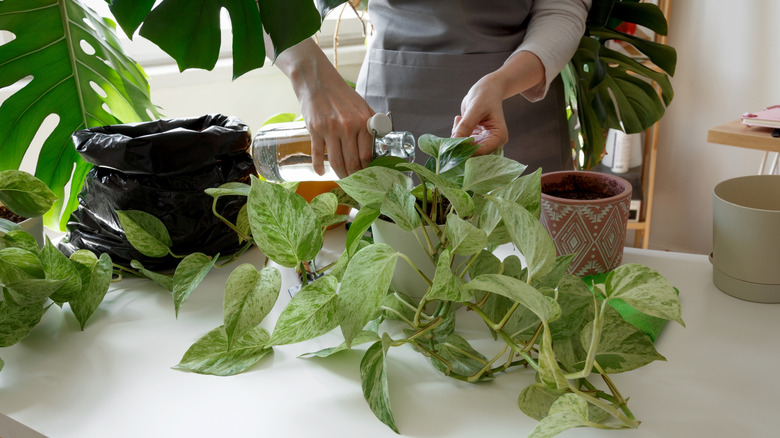Here's How Much Light Your 'Low-Light' Houseplants Actually Need
We may receive a commission on purchases made from links.
Houseplants are some of the most coveted forms of greenery people add to their homes. Not only are they generally lower-maintenance than outdoor plants, but you don't have to worry about external elements such as drought and frost. Indoor plants are also associated with better mood and health, such as the peace lily, a calming houseplant that may naturally improve your health over time. While arguably easier to grow, houseplants still need the right care, including the correct amount of sun exposure. Low-light houseplants generally require around 100 footcandles (FCs) of light intensity units, but the exact need depends on the individual plant.
As the term indicates, a "low-light" houseplant means that the plant has the lowest sunlight needs of all indoor plants. These tend to be plants where flowering is not the focus of their growth. In the wild, these types of plants tend to grow and thrive within the shade of other plants and trees.
On the flipside, it's also a common misconception that all houseplants don't need a lot of sunlight. There are indeed some plants that need high amounts of light, which is defined as 1,000 FCs or more. Just some examples of high-light houseplants include citrus trees, orchids, culinary herbs, and cacti. There are also medium-light plants, which can refer to a wide range of FCs of between 250 and 1,000. Due to such varying sunlight needs for houseplants, it's important to check with your nursery or the plant's tags to ensure you know whether you're taking in a low, medium, or high-light plant. Low-light houseplants may be the easiest to contend with if you have little natural light in your home.
Low-light houseplants can thrive on few footcandles of light
One hundred FCs is a good baseline to know when you're growing and maintaining low-light houseplants. Depending on the actual plant, though, low-light plant needs can be as little as 25 to 50 FCs, or as many as 250. You can make sure the space in your home has enough light for these types of plants with the help of a meter, such as the TOPTES TS-710 Light Meter. If you don't have this device, you can still determine if a particular space in your home qualifies as low-light. As a general rule, the light is low, but still adequate enough to read a book.
Common examples of the best low-light plants to grow indoors include snake plants (Dracaena trifasciata), Chinese evergreen (Aglaonema), peace lily (Spathiphyllum), pothos (Epipremnum), and English ivy (Hedera helix). These all tend to thrive near windows on the north side of your home, or even in dark corners. Aside from measuring footcandles with a light meter, know that most low-light houseplants need about four hours of natural sunlight each day.
Why caring for low-light houseplants goes beyond focusing on sunlight measurements
While the correct amount of light is the most important aspect of growing houseplants, you shouldn't rely on their placement or on light meter readings alone. It's arguably more important to check in with your plants to see how they're growing. Examples include checking soil moisture by hand, as well as looking to see if any of your plant's leaves have any unusual colors or texture. If you see these types of signs of plant stress, you can make adjustments accordingly.
Aside from lower sunlight needs, there are also other growing characteristics to be aware of when you have low-light houseplants. For one, since they don't receive as much sunlight, the soil will not dry out as quickly. This means you won't have to water them as often. Low-light plants also grow slower compared with their high-light counterparts. If you have a combination of plants with varying sunlight needs, don't be alarmed if you see full-sun plants on a south-facing window growing faster than your low-light plants.


